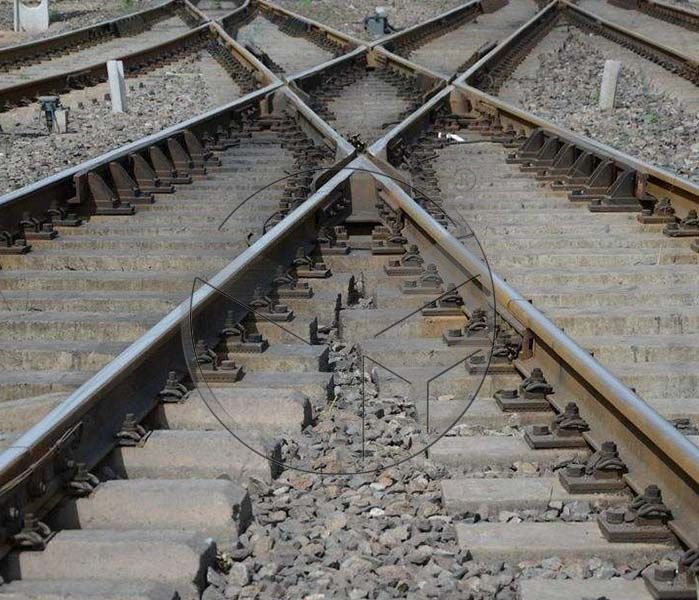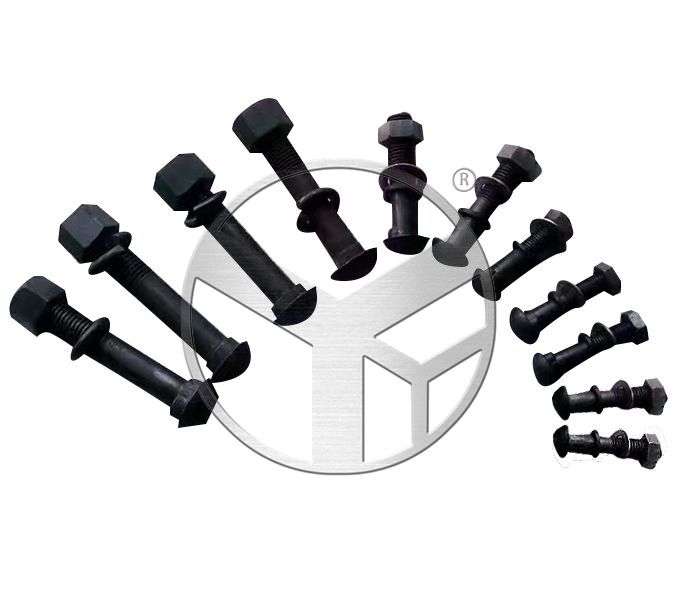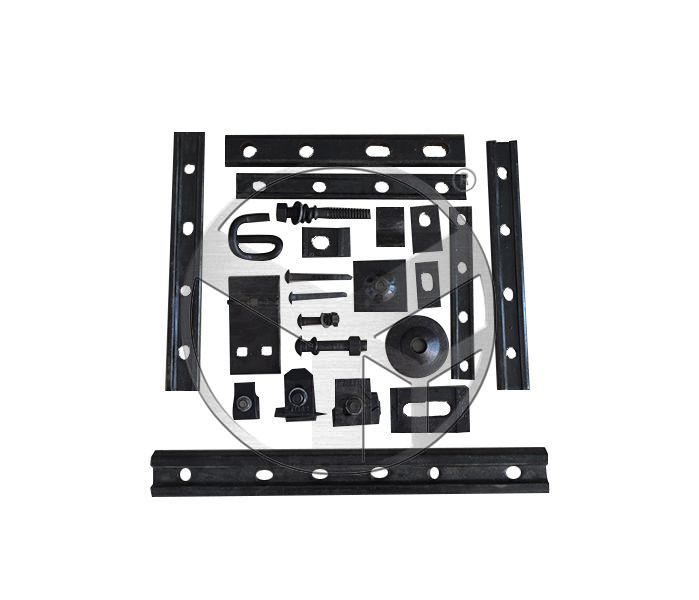Home >> News >> Latest News
The track is subject to variable vertical, transverse and longitudinal static and dynamic loads, which are transferred from the rail to the roadbed by sleeper and roadbed. By means of mechanical theory, the stress and strain generated by each component of the track under various load conditions are analyzed and studied to determine its bearing capacity and stability.
Track mechanics analyses the force and deformation of track structure under the action of locomotive and vehicle, as well as the influence of track structure diseases on track damage and train operation, so as to provide a basis for the design of track structure and the formulation of track management standards.

The track is composed of trackbed, sleeper, rail, connecting parts, anti-climbing equipment, and turnout.
Originally cast rails, developed into i-rails, the standard gauge (see track geometry) used by most of the world's railways in the 1980s was 1435 mm (4 ft 8(1/2 in)). The narrower one is called a narrow-gauge railway, and the wider one is called a wide-gauge railway (see railway engineering).
The roadbed is directly laid on the roadbed surface. The roadbed is made of gravel, gravel, slag and other materials. Rails, sleepers, and track beds are some of the different mechanics.
Qualitative materials, which are combined in different ways. Generally speaking, the bottom of the track is the trackbed, which provides the elastic and drainage function for the track. Rails can also be laid on concrete plinths (common on Bridges) or even embedded in concrete.
Sleeper buried in the bed, generally for horizontal laying, with wood, reinforced concrete or steel.The rail is fastened to the rail pillow by connecting parts.

Ballast laid on the roadbed, under the sleeper, in order to protect the sleeper object. According to the laying, the position can be divided into two layers, the upper layer is the top layer of slag, the bottom layer of slag.
The functions of trace slag are as follows:
1. Bear the pressure transmitted by the sleeper and distribute the pressure on the roadbed evenly.
2. Fix the sleeper position to maintain the correct line and slope of the track.
3. Eliminate the rainwater around and under the sleeper to prevent the soil deformation of the roadbed due to wet and soft.
4. Increase the elasticity of the track, so that the rail after being crushed by the train can quickly return to the original correct position.
5. Prevent weeds from growing on the tracks.
In order to ensure the safety of high-speed railway operation, improve the strength of roadbed and reduce the maintenance of dregs clearing and sieving. The concrete foundation is used to replace dregs, sleepers, and roadbeds, which is called a "slag-free track". It can reduce maintenance time, maintain good quality and traffic safety.
Rail is a railway construction for rolling train wheels on which the main functions are as follows:
1. Bear wheel weight and wear.
2. Scatter the wheel weight on the sleeper under the rail.
3. Under constant stress.
Regardless of the weight of the rail, the proportion of cross-section mass should be approximately 42% at the head, 21% at the waist and 37% at the bottom, and the height of the rail should be equal to the width of the bottom. When the railhead is worn 0.64 cm, the rail should be replaced immediately.

The function of railway spike is to buckle the rail on the rail pillow and maintain the fixed gauge between the two rails, the most commonly used railway spike is a common spike, hook spike, and spiral spike varieties.
Rail joint parts are to maintain the strength and stiffness of the joint so that the rail has uniform elasticity. Generally, two fishtail plates are attached to the waist of both sides of the rail, and the bolt with a spring washer is tightened. Fishtail version has 60 cm and 90 cm two kinds, the use of 60 cm version to screw with 4 bolts, the use of 90 cm to screw with 6 bolts.
In order to completely improve the defects of rail joint parts, continuous welding is adopted to replace rail joint by continuous welding of rail, so as to reduce the maintenance work of rail and increase the service life of the rail.
It is used to support the waist on the outside of the rail to resist the lateral force on the railhead and prevent the spike from loosening due to the rail tilt.
The metal clip or handle on the bottom of the rail is embedded with the sleeper, which can not only resist the vertical rolling of the wheel and the lateral thrust but also prevent the longitudinal crawling of the rail.
Installed under the rail, with its side against the sleeper (and pad), in addition, to prevent the rail caused by the rolling of the wheel longitudinal crawling, and can control the rail due to the increase in temperature and the phenomenon of extension.
All high-speed railways are built using a standard gauge (1435mm). The only exceptions are the 1520mm wide-gauge high-speed railways used by Russia and Finland. General railway generally divided into three broad gauges, standard gauge, narrow gauge. Most of China's early railway construction by Britain and Belgium engineer a pro-western policy at that time so the gauge use British standard, so most of our country with a standard for the standard rail (1435 mm), in the Yunnan-Guizhou region, Henan and northeast forest farm before liberation and narrow gauge railway built in the early years of liberation, also calls the MiGui, for gauge meter, and some local railways and industrial self-rail also USES MiGui, in recent years has been transformed.
The sleeper bearing pad under the rail is a railway object used to support the rail. Its functions are as follows:
1. The load transferred by the rail is evenly distributed on the ballast.
2. Maintain the line of the rail and the gauge between the two rails.
3. Ensure that the track has a uniform spring, acting as a building beam.
If you are interested in our products, please feel free to contact us.

Leave a message